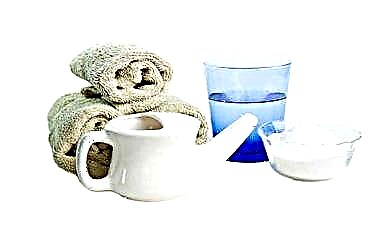 However, patients have vivid manifestations of the inflammatory process, and there is also a need for treatment.
However, patients have vivid manifestations of the inflammatory process, and there is also a need for treatment.
In the process of a diagnostic search, not only objective symptoms are important, but also anamnestic data - in particular, the time during which blisters in the throat appeared and persist.
If they are red, it can be assumed that the disease is associated with an enterovirus infection - the exact diagnosis should be clarified immediately.
Causes
Symptoms that characterize the inflammatory process in the oropharynx provoked by the infection are reddening of the mucous membrane, revealed during examination, as well as soreness, which becomes clearly pronounced when trying to swallow. In this case, the patient is most likely sick with pharyngitis or sore throat; the treatment of these diseases depends on the type of pathogen (virus, bacteria) and the severity of the condition, and the establishment of a diagnosis usually does not require a significant investment of time. However, vesicles, or bubbles in the throat, are a symptom that immediately allows us to say that this is not a classic sore throat.
There are several major pathogens that are characterized by the appearance of vesicular formations in the throat. These include viruses:
- Coxsackie;
- ECHO (echoviruses);
- herpes simplex.
The listed infectious agents provoke the development of diseases in patients of different age groups. The highest risk is in persons who are in close contact with the patient, who use the same dishes with him. However, the elements of the rash do not always have a red color - for example, when infected with the causative agent of herpes simplex, transparent bubbles are usually observed, the integrity of the walls of which is easy to break. It is worth noting that it is the oropharynx, but not the larynx, that becomes the focus of the lesion.
When will the rash on the back of the throat and tonsils be red? If such a symptom is found, you should make sure that we are talking about bubbles. This is important, since the few red elements that rise above the surface of the pharyngeal mucosa are characteristic of granular pharyngitis. They are represented by rounded lymphadenoid follicles, or granules, and are mainly characteristic of a chronic pathological process. Blisters in the oropharynx can be a sign of Lyell, Stevens-Johnson syndrome.
It is necessary to distinguish between vesicles and blisters, since the latter of the named elements usually appear in diseases with a toxic-allergic component of pathogenesis, are associated with a reaction to medicinal substances or other provoking factors, quickly open up with the formation of painful bleeding erosions, and are necessarily combined with a skin rash.
If red bubbles are detected on the mucous membrane of the pharynx and tonsils, the patient is most likely sick with herpetic sore throat. This disease is also called herpangina, vesicular or vesicular-ulcerative sore throat due to the peculiarities of the objective picture. The provocateurs are Coxsackie viruses, ECHO, the main route of infection is airborne. The incubation period is on average 2 to 5 days, in rare cases it lasts up to 2 weeks. Already at this time, an infected person can become a source of infection, therefore, the likelihood of an outbreak is high - especially in summer and autumn in children's groups.
Symptoms
What are the symptoms of herpetic sore throat? The main features can be divided into two large groups:
- complaints;
- objective manifestations.
Complaints
In the classic course, which occurs in the overwhelming majority of cases, patients are worried about:
- Weakness, headache.
- Musculo-articular pains without clear localization.
- Pain on swallowing of varying degrees of severity.
- Increase in body temperature (from 37.5 to 40 ° C).
Some patients have nausea, vomiting, abdominal pain around the navel and upset stools, which are considered signs of intoxication syndrome. Inspection of the oropharyngeal cavity is necessary, since the signs listed in the list are characteristic of a huge number of diseases and can be incorrectly interpreted in the absence of data on local changes in the pharynx and tonsils. It is important to exclude rotavirus infection, in which symptoms from the gastrointestinal tract can also be observed in combination with signs of pharyngitis and tonsillitis.
Herpetic sore throat is characterized by an acute, sudden onset with a rapid increase in fever and weakness. The younger the patient, the harder it is for him to endure the disease. In adult patients, erased forms may be observed, the condition in which is regarded as relatively satisfactory.
Objective manifestations
Objective manifestations include those symptoms that can be identified during the examination. With herpetic sore throat, changes in the mucous membrane of the pharynx and tonsils are of the greatest importance. Red bubbles are located:
- in the throat on the back wall;
 on the soft palate, palatine arches;
on the soft palate, palatine arches;- on the tongue and tonsils.
They are small in size - sometimes compared to a pinhead. Along with the appearance of rashes, regional lymph nodes increase and become painful. The bubbles persist for several days, after which they burst - erosions remain in their place, which heal quickly. The stage of transformation in erosion may be absent (if the size of the vesicles did not exceed 4 mm), and the elements of the rash undergo a reverse development with the restoration of the previous appearance of the mucous membrane surface.
The number of bubbles ranges from 1 or 2 to 10-15, they are located against the background of a reddened edematous mucous membrane. In this case, even those parts of the oropharynx that are next to the areas affected by the rash are inflamed. Soreness when swallowing depends on the number of blisters and ulcers. If the throat is examined in the first hours of the disease, the vesicles may not yet be - the primary elements of the rash are reddish spots, which are transformed into grayish and whitish nodules, and then, after a few hours, into vesicles. Vesicles on the tonsils with herpes sore throat usually do not merge. They can be located side by side, but at the same time they are represented by separate elements that are not prone to fusion and the formation of a single lesion focus. After the destruction of the vesicles, the remaining ulcers on examination are surrounded by a reddish corolla.
Prognosis and complications
The prognosis for herpetic sore throat is in most cases favorable, since the disease proceeds with complete recovery of damaged mucous membranes without the risk of chronicity of the infectious process. If the patient does not have immunodeficiency and severe concomitant diseases, the course of herpangina is acute, but without residual significant consequences.
There are no complications in the typical form of herpetic sore throat.
However, you should not perceive the pathology as harmless, because under certain conditions, the following can develop:
- dehydration;
- serous meningitis;
- enteroviral encephalitis.
Dehydration is caused, on the one hand, by a significant increase in body temperature, and on the other, by insufficient intake and / or significant loss of fluid. This pathological condition is rare, usually seen in young children.Pain when swallowing causes the patient to refuse food and water, and fever, vomiting, and upset stools cause increased fluid requirements. It should be noted that the soreness in the throat with herpetic sore throat is usually moderate, and only sometimes very pronounced.
Serous meningitis and enteroviral encephalitis are triggered by enteroviruses, which can also act as causative agents of herpetic sore throat. Therefore, when examining, it is important to exclude or, conversely, to identify their signs, which can be "masked" by the phenomena of herpangina. These are not complications, but concomitant pathologies that require attention and prompt adequate medical care.
Differential diagnosis
Even with vivid manifestations of the infectious and inflammatory process, establishing a diagnosis is sometimes difficult. This is especially true if the patient is a young child who cannot yet talk about their complaints. Order house designs - on the site Therefore, it is worth knowing about which pathologies, in addition to herpetic sore throat, can be characterized by a blistering rash in the throat:
- Pemphigus of the oral cavity and extremities.
- Chicken pox.
The causative agents of pemphigus of the oral cavity and extremities are Coxsackie viruses and type 71 enterovirus. Unlike herpetic sore throat, this disease has small gray and white blisters, the typical localization of which is the mucous membrane of the cheeks and tongue. The pharynx and tonsils are much less likely to be affected. Also, with pemphigus, there is severe soreness in the area of the rash, which can cause refusal to eat and drink. Rashes on the soles and palms are characteristic. If the patient is a small child, the rash can also spread to the hands, feet, perineum, buttocks, elbows, and knees.
Chickenpox is caused by the varicella zoster virus. The disease is considered a typical "childhood infection", since the vast majority of patients are children of the younger age group. It is characterized by an increase in body temperature values, the appearance of an itchy rash, which undergoes a series of transformations - from a spot it turns into a nodule, and then into a vesicle. The skin of the face, trunk, limbs is affected. After regression of the rash, no scars remain. Small bubbles in the oropharynx are not detected in all patients, they quickly collapse, after which painful erosions remain in their place.
With herpangina, the bubbles are located only on the mucous membrane, there is no skin rash.
This is an important feature that allows you to distinguish the disease from other infectious pathologies. However, it is valid only for an isolated form of herpetic sore throat, otherwise a skin rash indicates that the patient has a concomitant pathology - caused, as a rule, by the same pathogen. It should be noted that in the case of pemphigus, the appearance of a rash in the oral cavity precedes the appearance of a rash on the skin. You should also pay attention to the symmetry of the rash - usually not one gland is affected, but both, although the number of bubbles may not be the same.
If bubbles appear in the throat and on the tonsils, it is necessary to exclude the influence of mechanical, chemical and temperature irritants, consult a doctor. A physician, pediatrician or otolaryngologist (ENT doctor) can conduct an examination and prescribe treatment.

 on the soft palate, palatine arches;
on the soft palate, palatine arches;

